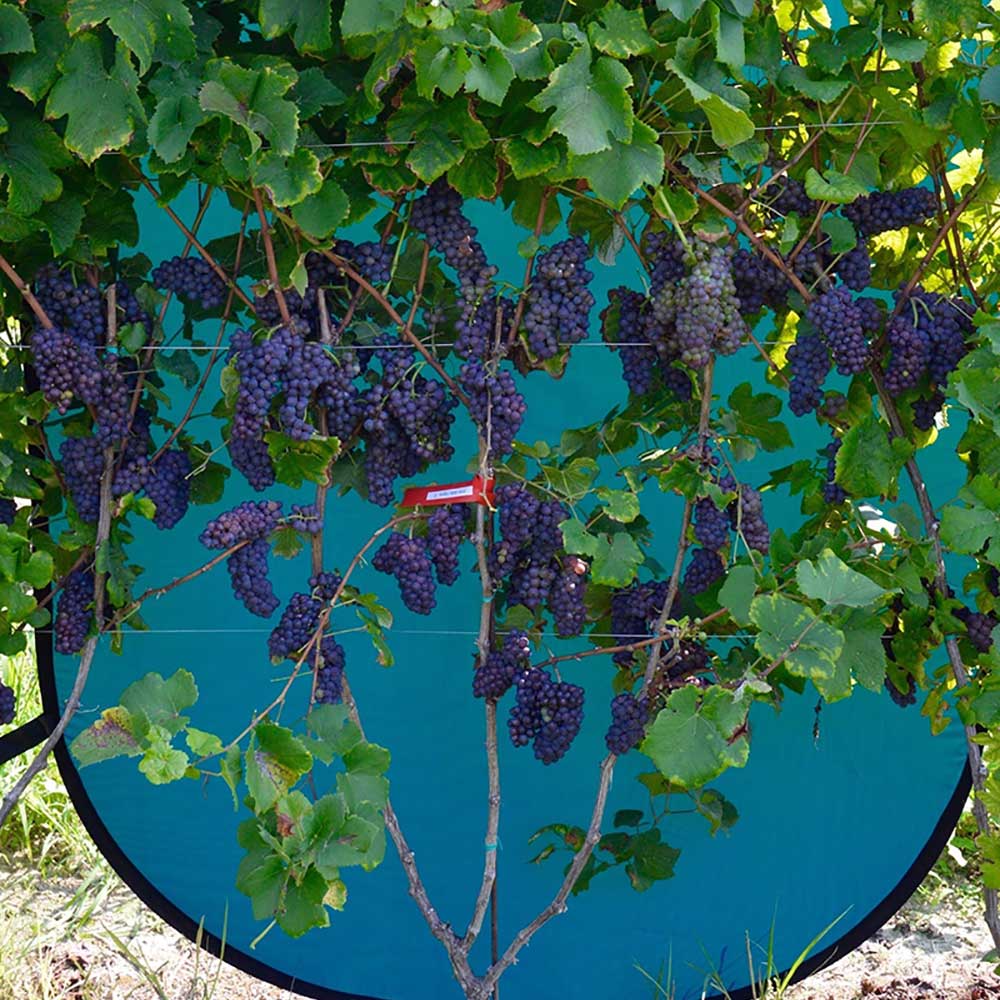BUSH VINE
GENERAL CONSIDERATIONS
The bush vine is a very old vine-training system, probably the first to be adopted by mankind when vine cultivation began. This form of training leads to the formation of branches which soon become self-bearing and on which the vegetative point is maintained in the distal section of the branch itself.
Historically it is used in dry climates, where water availability is scarce. This is obtained by containing the structure of the plant and reducing the distance between leaves and roots.
Saplings enter in a vegetative-to-productive balance sooner than with other forms of training and plants have a longer life expectancy due to their reduced use. The classic bush vine has a 3D shape, the branches opening in various directions increase leaves photosynthetic efficiency while sheltering the grapes from direct sunlight. Should the process need to be mechanized ramification must be developed on a single axis, the axis of the row.
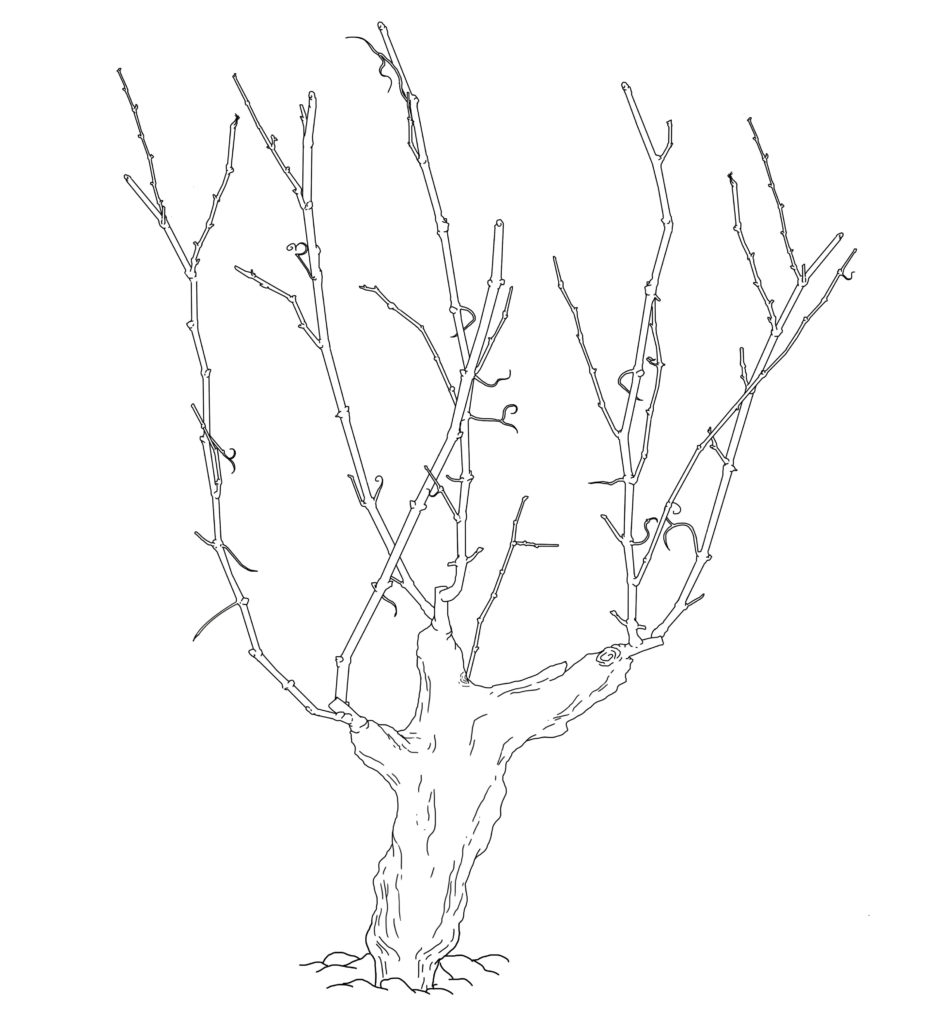
Goblet
TRAINING SYSTEMS
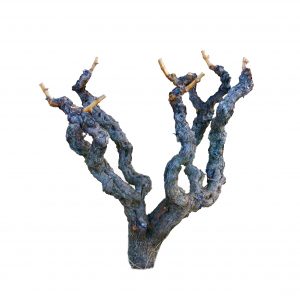
BUSH OR VASE
This is the classic shape and is obtained by branching the stem into many branches at the grafting point of the rooted cutting. The vegetative point usually has a spur of one or two free gems.
Plants with 4-5 vegetative points are relatively simple to deal with. If more vegetative points are present special attention is required to maintain branches hydraulic balance and avoid underflow in some of them. As the plant ages and as the distance between the vegetative point and the branch origin increases, some branches may devitalize and collapse.
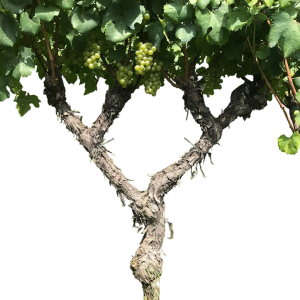
FAN SHAPED
A 2D shape provides for easier soil and vines management, reducing the labor needed in managing the vegetative wall and ensuring complete fungicide coverage. If the two-dimensional structure is not managed correctly it can easily lead to some branches prevailing over others. This phenomenon is almost nonexistent in the simple bush shape.
SAP TRAINING
The greater the acrotony of the vine, the greater the attention to be paid to the formation of the structure. Also for this form of training, the greater the number of vegetative points, the greater the care in choosing which branches will be developed. In the formative pruning and when pruning for production, any mistake can make one branch prevail over another. With 3 vegetative points it is difficult to make mistakes but with 4 or more, errors are difficult to fix.
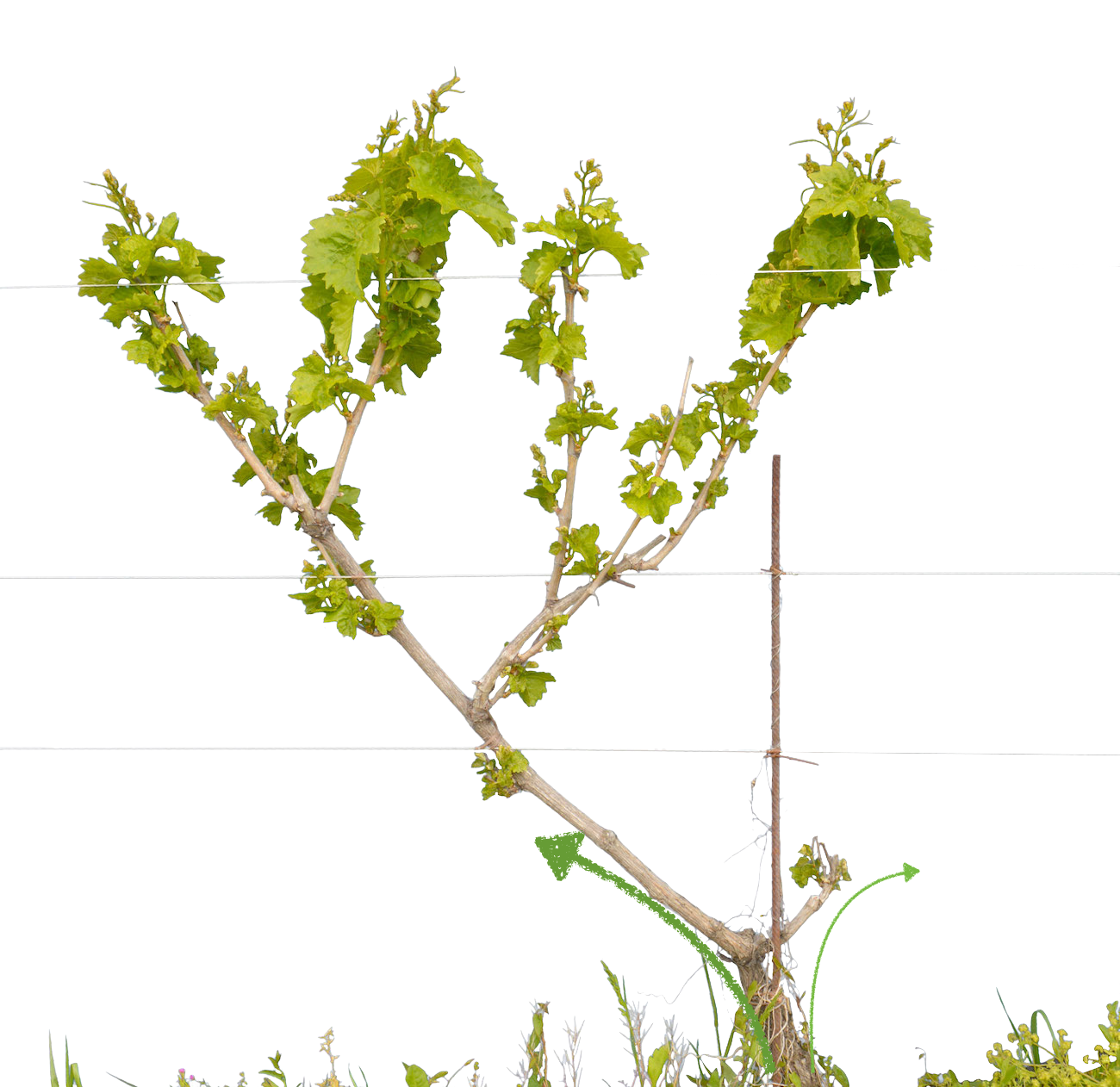
BRANCHING
Key to good branching is to arrange vegetative points correctly in the space. Each vegetative point must reach a certain position so that the leaves can get as much sunlight as possible and bunches are not crammed.
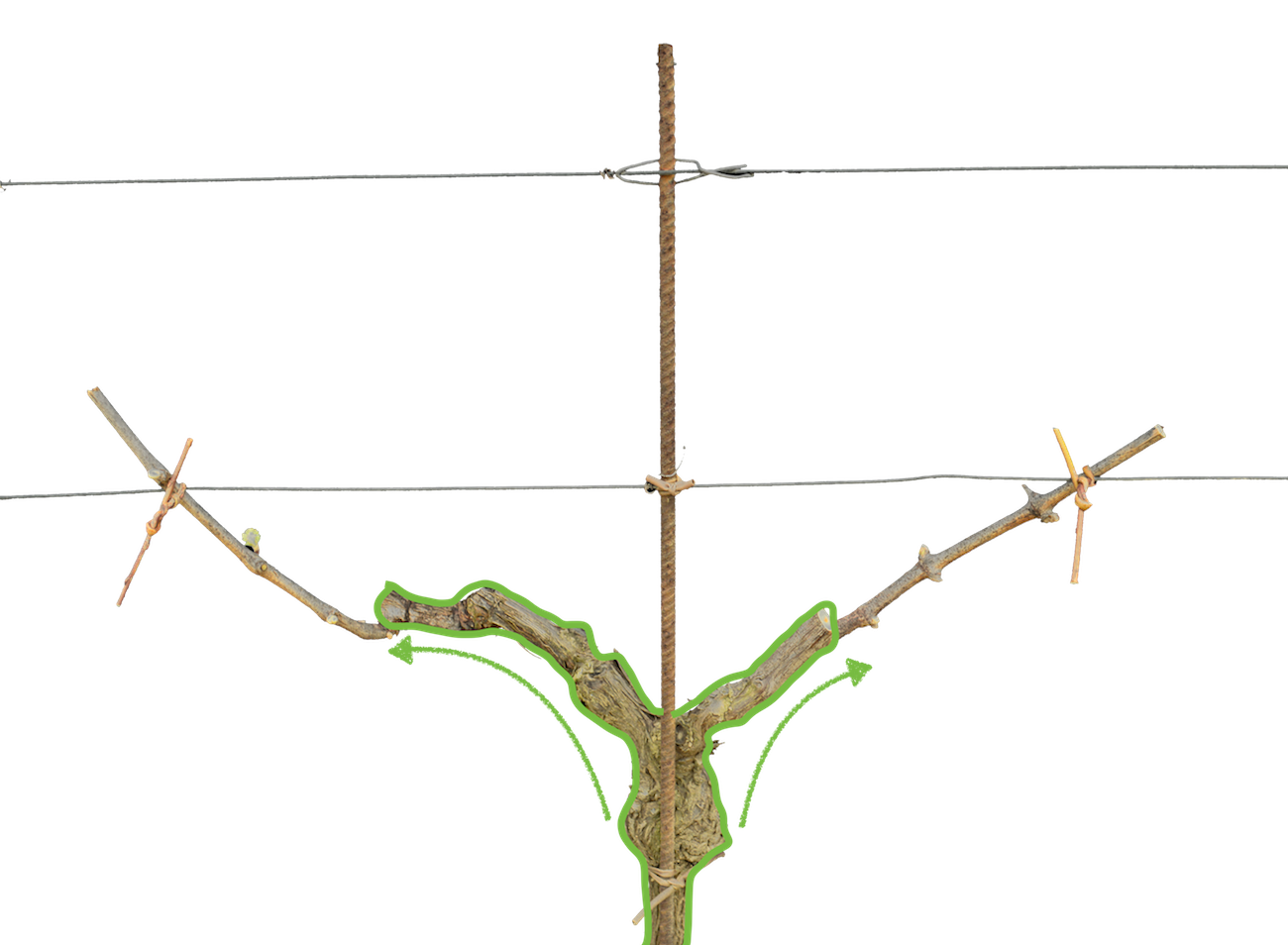
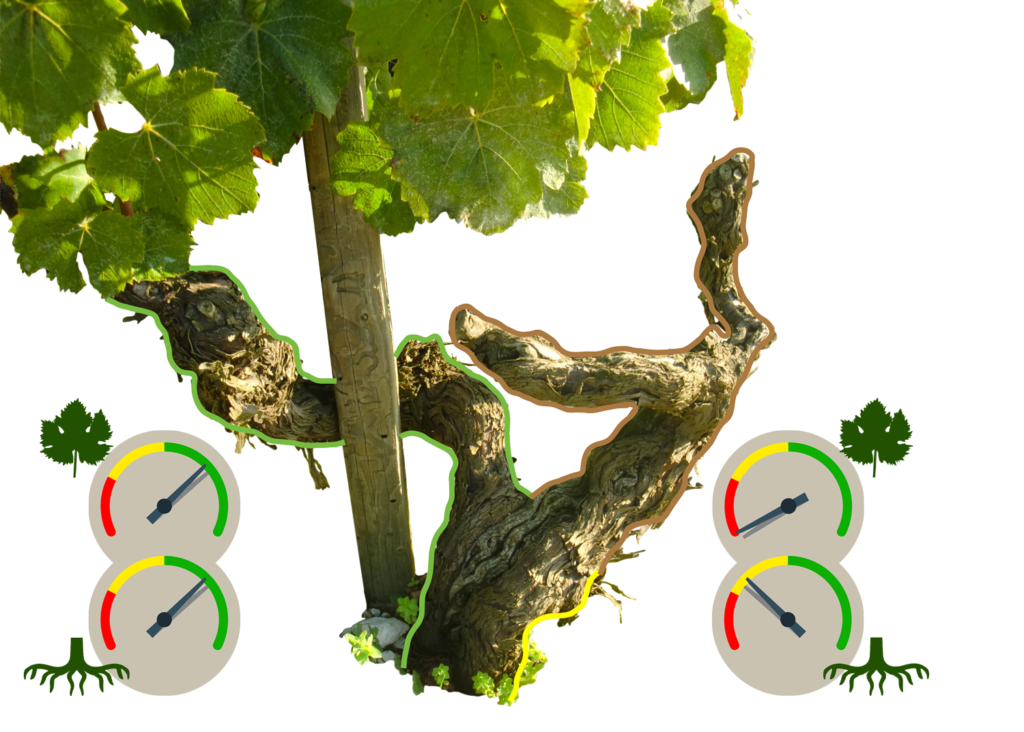
When branching a plant one must guarantee the same hydrostatic conditions in all the branches. Should some branches take prevalence, disadvantaged ones will inevitably collapse. During structure-formation a plant can be forced to develop a weak section but when the vine is already in full production it is not appropriate to force the formation of a new branch. One can instead create the missing vegetative point by splitting the one placed on the most vigorous branch. This is because the sap is compartmentalized in the plant so that a radical difficulty can affect the corresponding aerial part.
BUDS FERTILITY
This form of training, as well as the spurred cordon training, must be used for varieties that show basal buds fertility. With this form of training the Refosco variety, which presents sterile basal buds, will not yield a good production. The same phenomenon is also accentuated by the low-light conditions.

MORE BRANCHED FORMS
The branched structure can also be applied to mass production vineyards. Differently from the cordon training, the branched or ramified structure is a structure that hardly loses the vegetative points because each of them has enough buds to guarantee a constant flow of lymph in the branch. The first years of training require more attention to the formation of the structure (than cordon training – Casara, Sylvos) but once the structure is formed vegetative point loss is reduced to a minimum. Following this principle Minimal Pruning was invented; a plant management system that only prunes with mechanical trimming. In some cases it also foresees a winter phase during which collapsed or unusable branches are removed.
